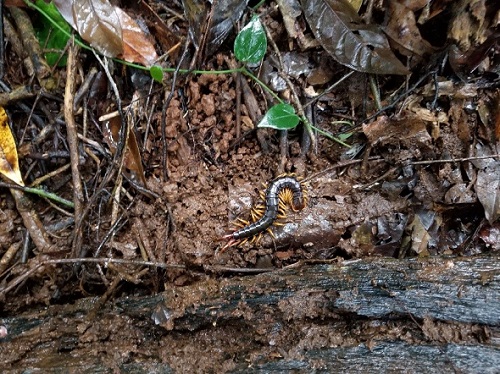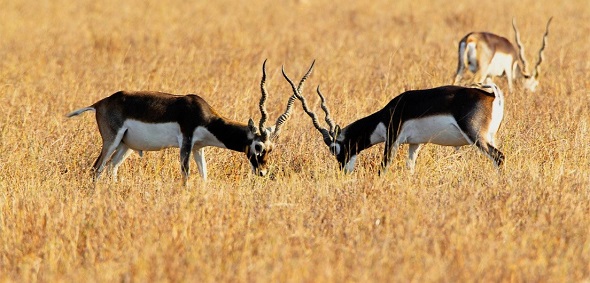
Centipede [Image: D.K. Bharti]
Centipedes are solitary and mostly nocturnal predators with 420 million years of evolutionary history in the soil ecosystem. They are found across the world except Antarctica. Researchers from the CSIR-Centre for Cellular and Molecular Biology (CSIR-CCMB), Hyderabad, and Natural History Museum, London have investigated the factors shaping within-species genetic diversity across centipede species.
Genetic diversity is an important component of biodiversity, which measures the genetic variation between individuals belonging to a species. It determines the evolutionary potential of a species and also indicates how they respond to environmental change.
“Most of our current understanding of drivers of genetic diversity largely comes from well-studied organisms like amphibians, birds, and mammals. Our work helps assess the generality of patterns in genetic diversity by studying a soil arthropod group that brings in diversity in traits, geography, and evolutionary history to existing research,” informs Dr Jahnavi Joshi, the lead researcher.
Studying variation in genetic diversity is important as it helps in understanding evolutionary processes that shape species. The researchers found that genetic diversity in centipedes is relatively higher as compared to other animal groups, including more familiar arthropods such as insects.
Centipedes are solitary and mostly nocturnal predators with 420 million years of evolutionary history in the soil ecosystem. They are found across the world except Antarctica. Researchers from the CSIR-Centre for Cellular and Molecular Biology (CSIR-CCMB), Hyderabad, and Natural History Museum, London have investigated the factors shaping within-species genetic diversity across centipede species.

[Image: Nehal Gurung]
Genetic diversity decreases with body size, possibly because larger species tend to occur at low population sizes. Centipede species, where the mother cares for the young, were found to have greater genetic diversity, which goes against our general assumption that this trait is correlated with fewer offspring and, thus, a smaller population size.
“Apart from the biological traits of species, we found that aspects of their geographic distribution also influenced genetic diversity. We found that genetic diversity to be higher in the Southern as compared to the Northern hemisphere, which may be associated with historic climatic stability and low seasonality in the south. Individuals farther apart showed greater genetic variation, suggesting that centipedes may be limited in their dispersal ability,” the researchers explain.
They collated publicly available DNA sequences and supplemented them with geographic coordinates, species traits, and range data using museum databases and published literature. The final dataset consisted of 1245 sequences representing 128 centipede species, which was used to estimate genetic diversity for each species.
The study establishes a relationship between genetic diversity, species traits, and latitude, which has been observed in other animal groups. More such studies in other soil-dwelling species will provide data regarding patterns and drivers of genetic diversity. The study also highlights geographic and taxonomic gaps in centipede sequence data globally, which can guide research efforts in the future.
The study has been published in the journal, Global Ecology and Biogeography. The team consisted of D.K. Bharti, Pooja Yashwant Pawar, Gregory D. Edgecombe, and Jahnavi Joshi.
India Science Wire
ISW/SM/CCMB/Centipede/Eng/08/06/2023





